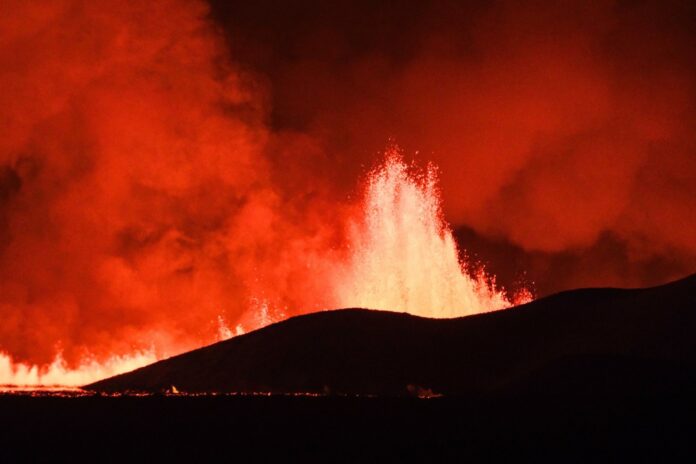Iceland faces a volcanic eruption on the Reykjanes peninsula following weeks of heightened earthquake activity, prompting the evacuation of about 4,000 people from Grindavik. The eruption began north of the town, impacting nearby attractions like the Blue Lagoon geothermal spa, which was closed. While this event won’t match the disruptive 2010 eruption, experts warn of potential lava flow threats.
The Icelandic Met Office confirmed the eruption’s start, situated about 4km north-east of Grindavik, with seismic activity moving towards the town. Social media shares images and videos capturing lava bursting from the volcano just an hour after detecting seismic events. The eruption’s glow is visible from the capital, Reykjavik, 42km away, with witnesses describing a red-lit sky and billowing smoke.
Authorities urge people to avoid the area as the volcano’s crack spans 3.5km, with lava flowing at a rate of 100 to 200 cubic metres per second—far surpassing previous eruptions in the region. A senior police officer noted the eruption as a “quite large event,” with lava flowing in various directions.
Despite the spectacle, Iceland’s foreign minister assures no disruptions to flights, emphasising the eruption’s power. The last month saw precautionary evacuations in Grindavík, with the recent eruption posing no reported injuries.
Comparing it to the 2010 Eyjafjallajokull eruption, experts, including volcanologist Dr. Evgenia Ilyinskaya, believe the impact will be less severe, stating that southwest Iceland’s volcanoes are not capable of generating similar ash clouds. Authorities are prepared for potential threats to homes and infrastructure, emphasising protective measures in place.
Prime Minister Katrin Jakobsdottir acknowledges the significant event and expresses hopes for the best, emphasising recently constructed defenses. President Gudni Johannesson prioritises safeguarding lives while aiming to protect structures from potential damage.

















